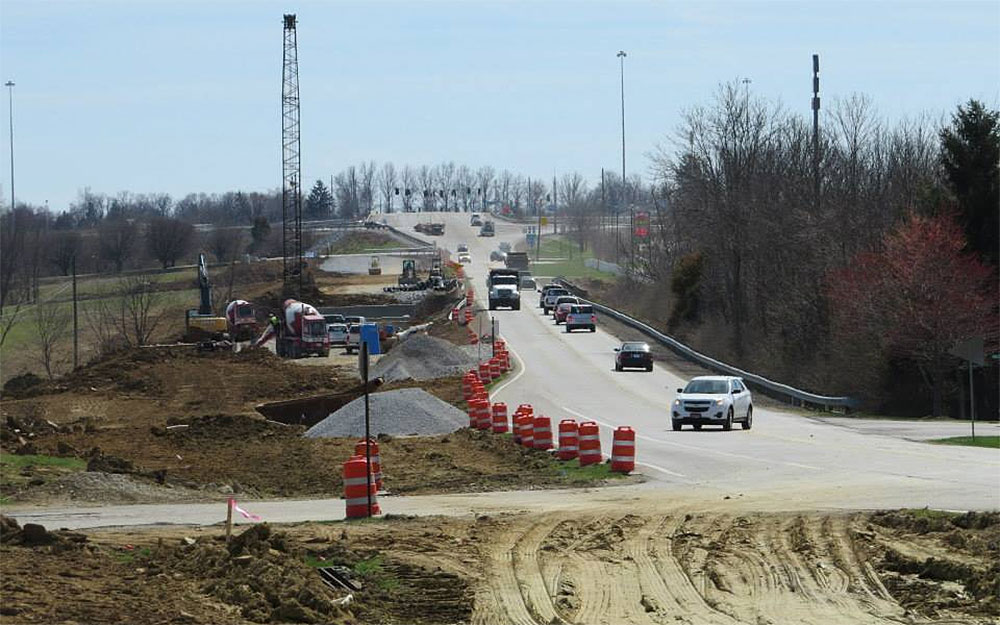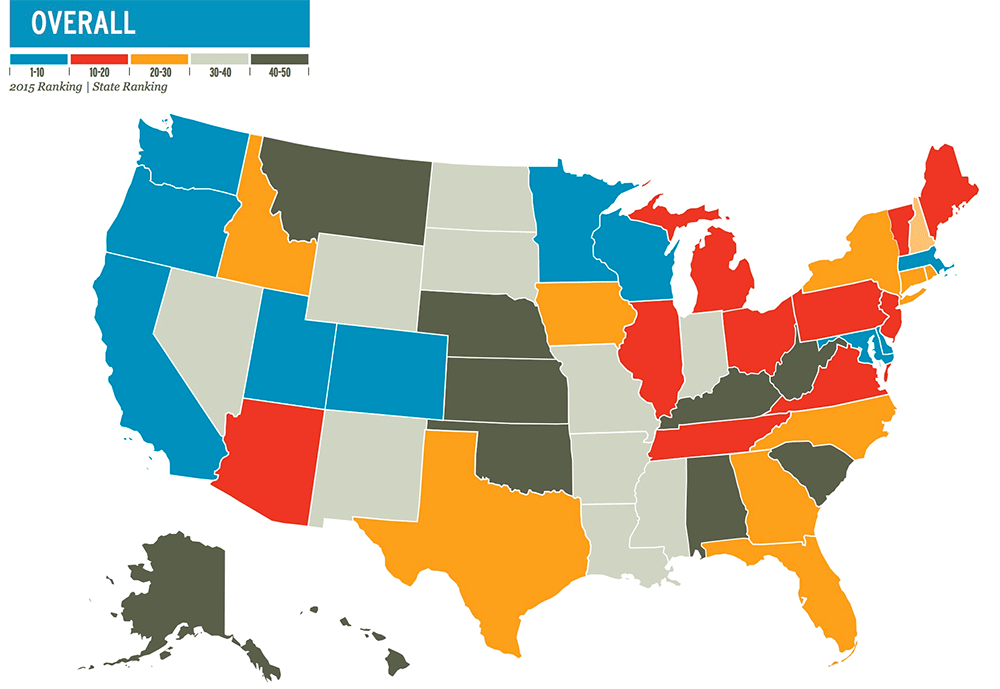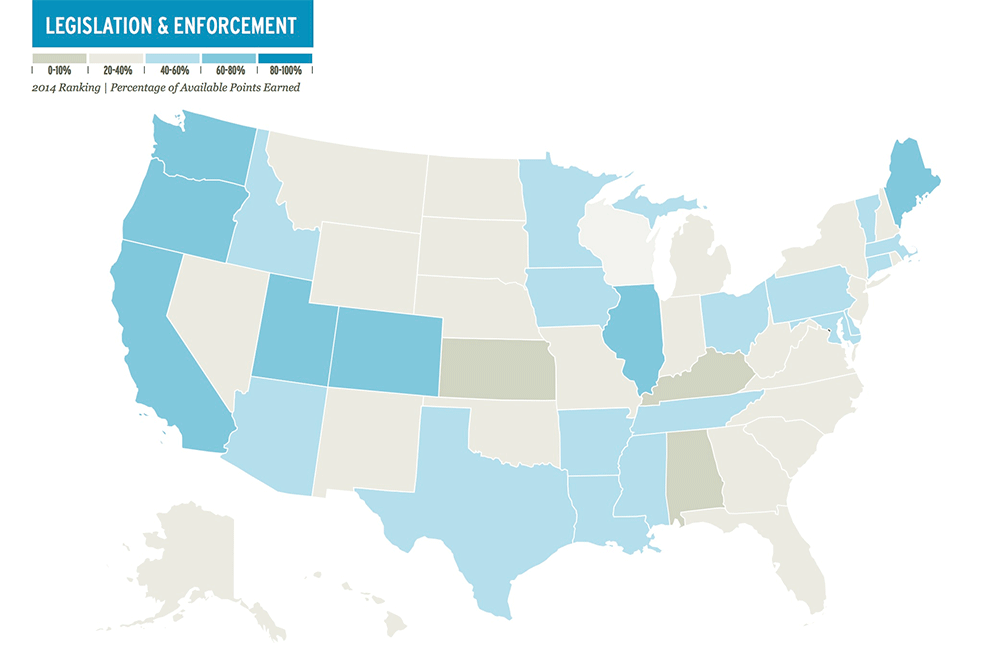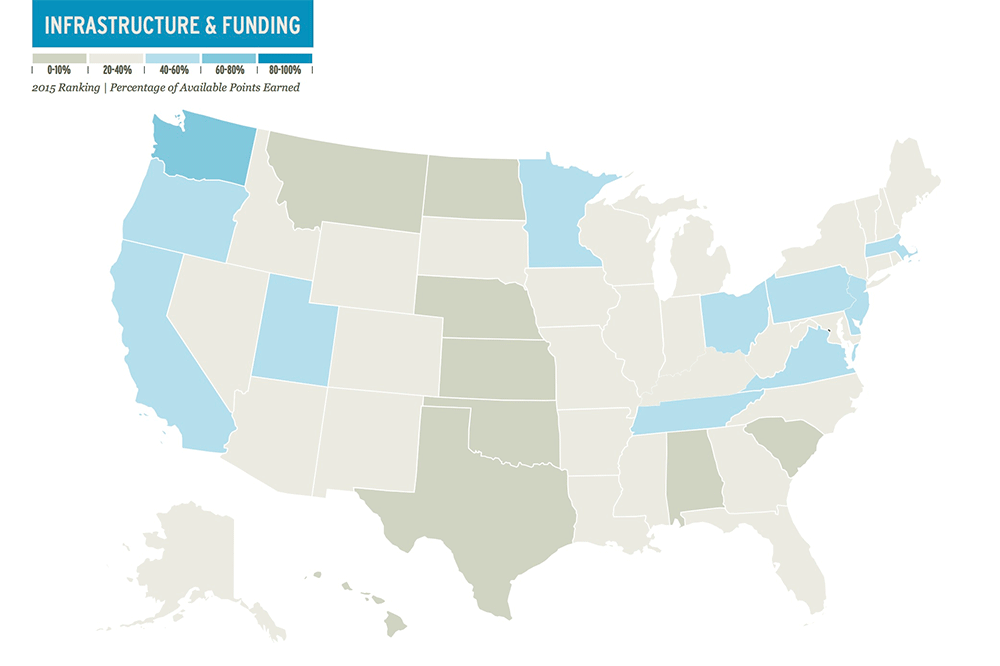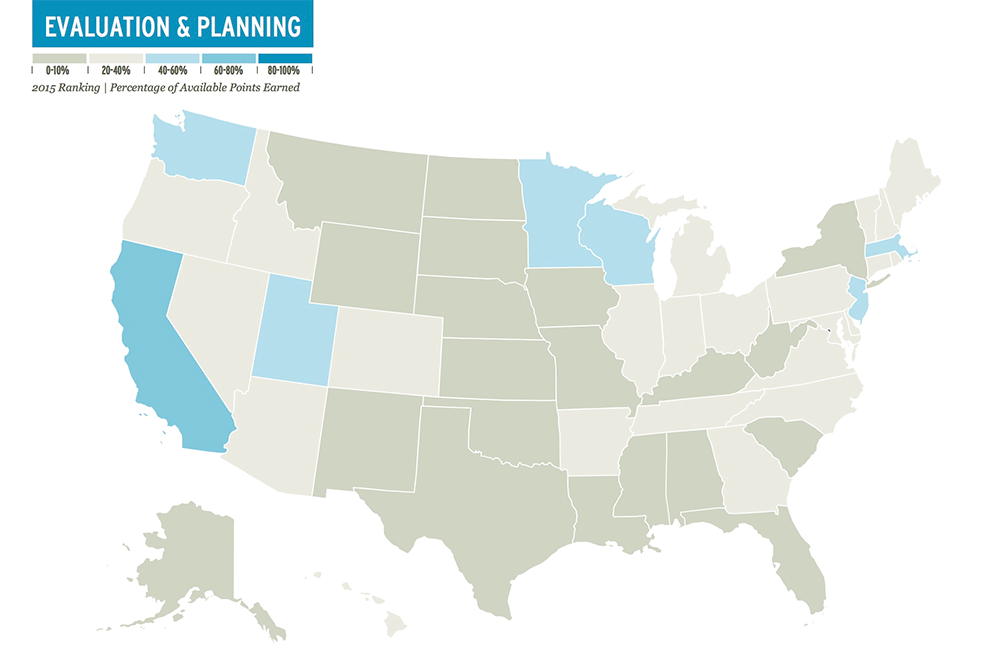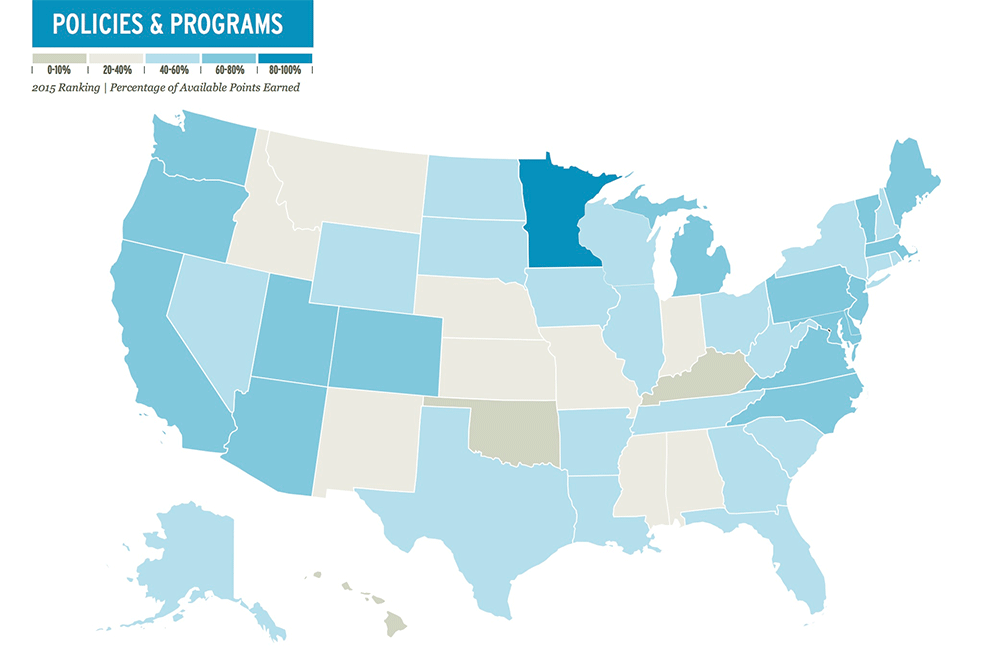At least there’s Alabama. In new rankings from the League of American Cyclists, Kentucky ranks 49th in bike friendliness, falling a spot from its 2014 ranking of 48th. The top five states this year were Washington, Minnesota, Delaware, Massachusetts, and Utah.
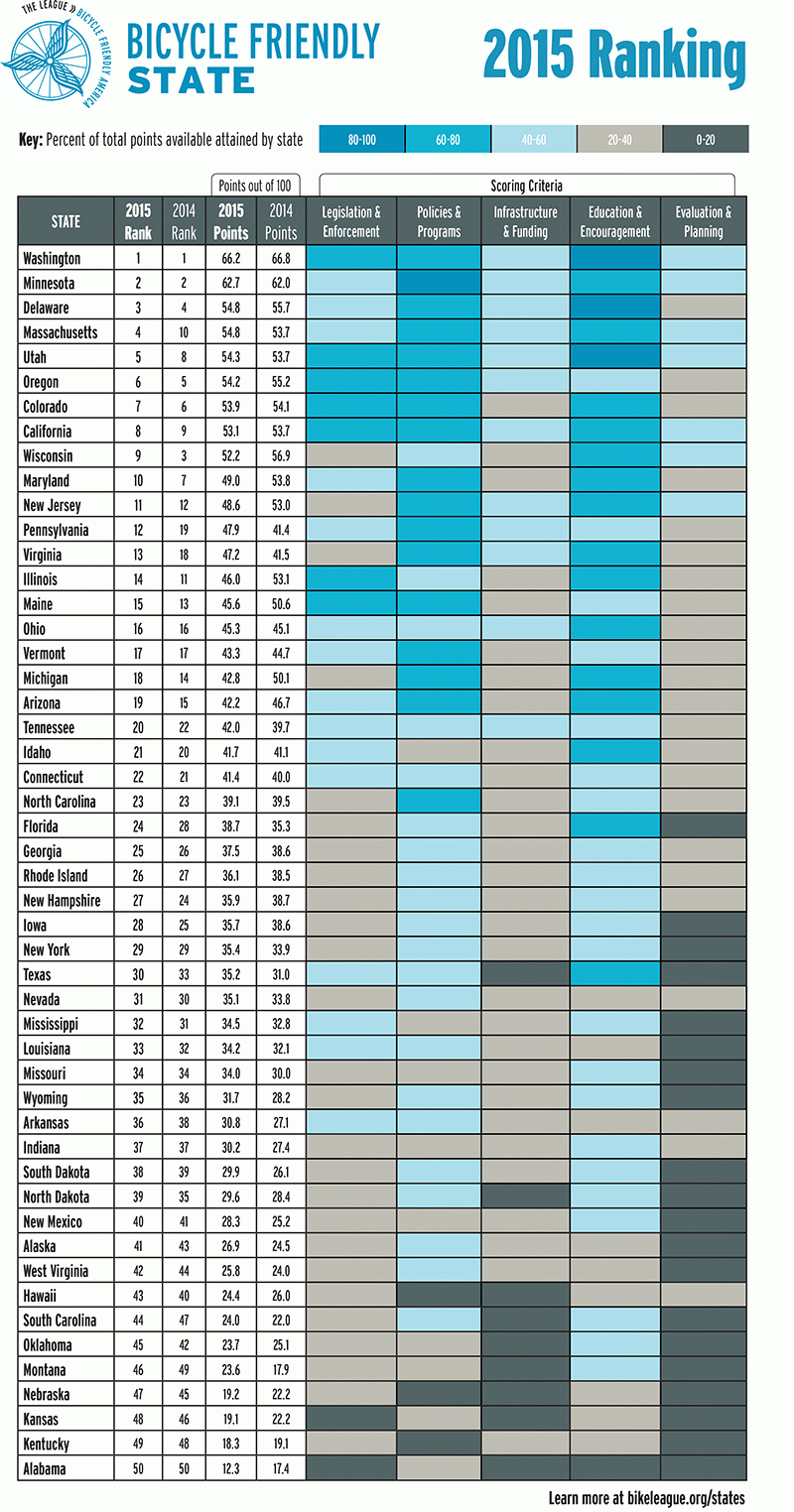
The League puts together the annual ranking “based on a multi-faceted Bicycle Friendly State questionnaire that is answered by each state’s Bicycle Coordinator,” according to their website. The ranking scrutinizes five categories that affect bike friendliness: Legislation & Enforcement, Policies & Programs, Infrastructure & Funding, Education & Encouragement, and Evaluation & Planning.
We reached out to the Kentucky Transportation Cabinet (KYTC) and Metro Louisville’s Bike Louisville about the ranking, but neither responded. (We’ll update this article if we hear back from them.) Chris Glasser, president of the nonprofit advocacy group Bicycling for Louisville (B4L), said there’s still a long way to go in shifting the state’s windshield perspective to one that benefits all users.
“KYTC still views roadways through an engineering lens,” he told Broken Sidewalk in an email. “It’s a question of, ‘How do we move vehicles as quickly as possible from point A to point B?’ There’s no state-wide Complete Streets policy—no consideration of other users like pedestrians or cyclists when designing roadways.”
This lack of a complete streets policy has led to many of Louisville’s major thoroughfares—even in urban parts of the city—to be designed and behave more like highways than city streets. “In Louisville, we see this on streets like Second and Third streets, Shelbyville Road, Preston Highway, and Dixie Highway,” Glasser said. “Those are roads that the state (KYTC) controls, not the city.”
And the neighborhoods surrounding these streets, the city, utility companies, and the state are often not on the same page when it comes to improving them for pedestrian and bicyclist safety. Think back to the SoBro Artwalks kerfuffle last year when LG&E inadvertently tore up one crosswalk, generating headlines. Shortly after that KYTC road crews scraped off the remaining three despite widespread neighborhood and city support.
Local plans to improve local Louisville streets are often scuttled before they leave the design phase. “B4L worked with Metro this winter on a plan for bike lanes on Preston Highway, but the state engineers wouldn’t even consider it because it called for 10 foot travel lanes,” Glasser said. “Ten feet is a standard width on city streets but narrow by state standards.”
The League of American Bicyclists offered the KYTC a few suggestions on how to become more bike friendly in Kentucky’s ranking report card. The commonwealth scored 18 out of a possible 100 points, which landed it so low on the list. Here are five recommendations that would go a long way:
- Adopt a statewide Complete Streets policy. The National Complete Streets Coalition has a model state policy and a variety of other resources to ensure adoption and implementation.
- Update your state bicycle master plan. The plan update should evaluate and build on the previous bicycle master plan, and reflect changes in bicycle user needs.
- Adopt a safe passing law with a minimum distance of 3 feet to address bicyclist safety.
- Repeal the state’s mandatory sidepath law. These types of laws create conflicts between bicycles and other path users; ignore the quality, safety, topography and connectivity of available paths; and create confusion about where bicyclists can ride. Kentucky’s mandatory sidepath law contributes to tense relationships between bicyclists and drivers and a perception that bicyclists should not be allowed on roads, even when the mandatory sidepath law does not apply.
- Update state traffic laws regarding bicyclists riding “as far right as practicable” to better inform bicyclists and the public where bicyclists can ride. Several states now specify that a bicyclist can ride explicitly in terms of the safety of the bicyclist and surrounding traffic.

Louisville on its own is in a much better position in terms of bike friendliness, ranking at the Bronze level, the League’s lowest, for bike friendly cities, a status the city has held for a number of years. According to the League, these city rankings are a “roadmap” toward bike friendliness, so it’s time we actively look to step up to the next level. And Louisville is making progress to that end, with new bike lanes, its expanding Neighborways program, a planned bike share system, and the city’s first protected bike lane. Additionally, the University of Louisville is ranked at the Silver level as a bike friendly university, the only one in Louisville. The University of Kentucky (Silver) and Western Kentucky University (Bronze) are the only others in the state.
These new state rankings are especially sobering news as the city is ramping up National Bike to Work Week activities culminating in a city-wide celebration on Friday. It does offer us a path forward, though, and we hope Kentucky takes it. But while Louisville makes its own progress, it’s going to be a slow process of pushing Kentucky up in the rankings. We hope the KYTC takes the League’s recommendations to heart, not just to get out of second-to-last place in the rankings, but to make safer, more humane streets for everyone in the commonwealth.
The League scores states based on ten criteria that “create a more holistic Bicycle Friendly State.” The group lists the following as attributes of a bike friendly state:
- People commuting by bike (more than one percent). According to the latest census numbers from 2012, eight states had a bike mode share of more than one percent. Oregon led the way with 2.5 percent.
- Safe passing & vulnerable road user laws. According to the League, these laws “provide legal protections for cyclists. Safe passing laws provide protection by making it clear to drivers that passing a bicyclist safely means giving a certain amount of space to the bicyclist.”
- Complete streets policy. “Complete Streets aredesigned to enable safe access for all users, including pedestrians, bicyclists, motorists and transit riders of all ages and abilities. Complete Streets policies ensure that all users are accommodated when streets are designed and built.” A 2014 survey shows 22 states have complete streets policies.
- Committed state funding. The 2014 Bike Friendly States survey shows 21 states have a dedicated revenue source for bicycling and walking infrastructure.
- Active state advocacy group. “The robust implementation of bicycle friendly policies and practices requires broad public support. That is where advocacy comes in. Statewide advocacy organizations galvanize public support for bicycling to encourage departments of transportation to embrace bicycle friendly policies and work with state legislatures to pass bicycle friendly laws and to finance active transportation investments.” Last year 46 states had such groups.
- State bicycle plan (adopted 2004 or later). The League shows 24 states with “a combined bicycling and walking statewide master plan.” Fourteen states have no plan at all.
- Share the road campaign. “Share the Road Campaigns are usually meant to remind drivers that other road users have equal rights, and duties, while on roadways.”
- Bicycle education for police. “Law enforcement officers should understand safe cycling practices and the laws that control bicyclist-motorist interactions so that they can effectively enforce traffic laws, respond to crashes involving bicyclists, and collect information that is important to delivery justice to bicyclists who are injured or killed on our nation’s roadways.”
- Bicycle safety emphasis in strategic highway safety plan. “In order to spend important Highway Safety Improvement Program funds on bicycling, bike safety needs to be identified in a state’s Strategic Highway Safety Plan. Nine states fail to identify either bicycle or pedestrian safety in their plans. Thirty-eight states say they identify both bicycling and pedestrian safety.”
- Top 10 states for Congestion Mitigation & Air Quality (CMAQ) spending. “Over 10 percent of federal funds spent on bicycling and walking since 1992 came from the CMAQ program.”
You can peruse more data from the League here.

